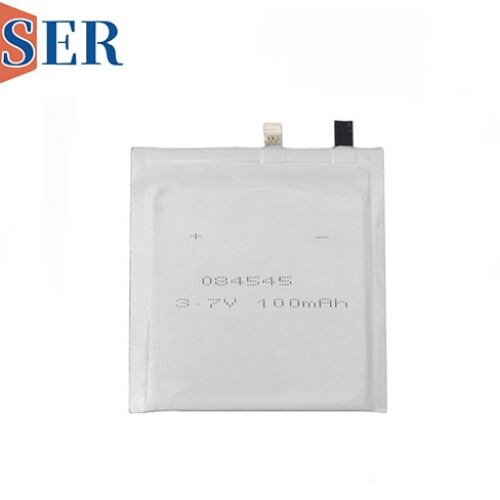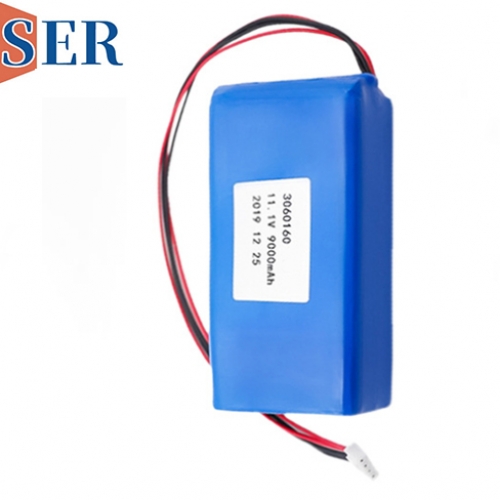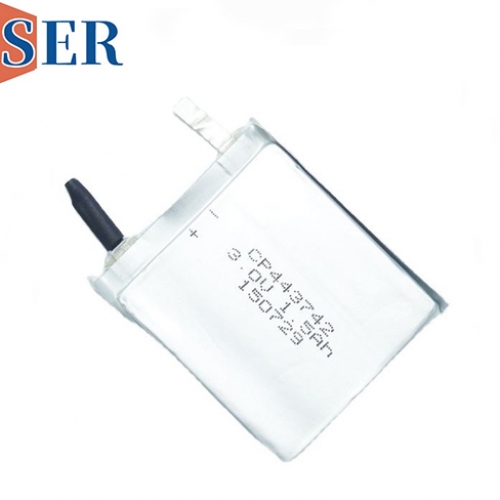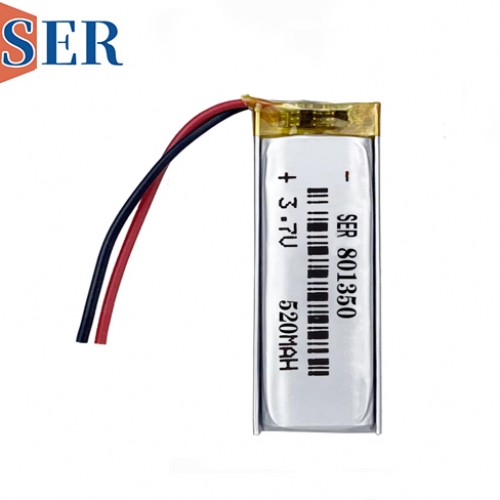Ultrathin Rechargeable Li-Ion Batteries: The Pinnacle of Portable Power Innovation
Ultrathin Rechargeable Li-Ion Batteries: The Pinnacle of Portable Power Innovation

Introduction: The Rise of Ultrathin Batteries in Modern Technology
In an era where portability and miniaturization define technological progress, ultrathin rechargeable batteries have emerged as the cornerstone of innovation. Among these, lithium polymer (Li-Polymer or LiPo) batteries, particularly the ultrathin battery 014460 180mAh variant, stand out for their exceptional energy density, flexibility, and adaptability to compact designs. These ultra thin batteries are not merely power sources but enablers of sleeker, lighter, and more efficient devices—from wearables and medical implants to IoT sensors and consumer electronics.
This article delves into the science, applications, advantages, and future prospects of ultrathin LiPo batteries, focusing on the 014460 180mAh model as a case study. By exploring their design principles, performance metrics, and market impact, we aim to provide a comprehensive understanding of why these batteries are revolutionizing portable power.
1. Understanding Ultrathin Li-Polymer Batteries: Chemistry and Construction
1.1 The Core Chemistry: Lithium-Ion vs. Lithium-Polymer
Traditional lithium-ion (Li-ion) batteries use a liquid electrolyte, which requires a rigid casing to prevent leaks and ensure safety. In contrast, Li-polymer batteries replace the liquid electrolyte with a solid or gel-like polymer, eliminating the need for a bulky metal casing. This fundamental difference allows LiPo batteries to achieve:
Thinner profiles: Polymer electrolytes enable manufacturing at thicknesses below 1mm.
Flexible shapes: Batteries can be molded into custom forms (e.g., curved, L-shaped) to fit device designs.
Enhanced safety: Reduced risk of leakage and thermal runaway under physical stress.
The 014460 180mAh battery exemplifies this technology, with dimensions of 14mm (width) × 46mm (length) × 0.5–1mm (thickness), making it ideal for space-constrained applications.
1.2 Layered Architecture: How Ultrathin Design is Achieved
A typical ultrathin LiPo battery consists of the following layers:
Cathode (Positive Electrode): Made from lithium cobalt oxide (LiCoO₂) or lithium iron phosphate (LiFePO₄) for high energy density.
Anode (Negative Electrode): Graphite or silicon-based materials to store lithium ions.
Polymer Electrolyte: A porous matrix (e.g., polyethylene oxide) infused with lithium salts, facilitating ion transport.
Current Collectors: Ultra-thin aluminum (cathode) and copper (anode) foils for electrical conductivity.
Encapsulation: A laminated pouch film (aluminum + polymer layers) seals the battery, protecting against moisture and physical damage.
The 014460 180mAh battery leverages this architecture to achieve a volume energy density of ~400 Wh/L, comparable to bulkier Li-ion cells, while maintaining a weight of just 3.6 grams.
2. Key Advantages of Ultrathin LiPo Batteries
2.1 Unmatched Energy Density in Compact Form
The 014460 180mAh battery delivers 180 milliampere-hours (mAh) of capacity despite its diminutive size. This translates to:
Wearables: Powering a smartwatch for 2–3 days on a single charge.
Medical Devices: Sustaining a continuous glucose monitor (CGM) for up to 10 days.
IoT Sensors: Operating wireless temperature/humidity sensors for over a year with energy-harvesting integration.
2.2 Design Freedom for Product Engineers
Unlike cylindrical or prismatic Li-ion cells, ultrathin LiPo batteries can be bent, folded, or cut (within limits) to fit non-standard enclosures. For example:
Curved OLED Displays: Batteries conform to the screen’s curvature in smartphones.
Hearing Aids: Custom-shaped batteries nestle into the ear canal’s contours.
Smart Cards: Flexible batteries power e-passports and payment cards without adding bulk.
2.3 Fast Charging and Low Self-Discharge
Modern ultrathin LiPo batteries support 1C–2C charging rates, allowing the 014460 180mAh model to recharge from 0% to 80% in under 30 minutes. Additionally, their self-discharge rate is <2% per month, ensuring long-term reliability in storage.
2.4 Safety and Environmental Compliance
LiPo batteries are inherently safer than liquid-electrolyte counterparts due to:
Solid-state barriers: Reduced risk of internal short circuits.
Overcharge protection: Built-in circuits prevent voltage spikes above 4.2V.
RoHS compliance: Free from hazardous substances like mercury and cadmium.
3. Applications Driving Demand for Ultrathin Batteries
3.1 Wearable Technology: The Need for Invisibility
Smartwatches, fitness trackers, and AR/VR headsets demand batteries that are:
Lightweight: To avoid user discomfort during prolonged use.
Invisible: Thin enough to be embedded in straps or frames.
High-drain: Capable of powering GPS, heart-rate monitors, and OLED displays simultaneously.
The 014460 180mAh battery is widely used in premium smartwatches, where its 3.8V nominal voltage and 180mAh capacity strike a balance between size and runtime.
3.2 Medical Implants and Wearable Health Devices
For devices like pacemakers, neurostimulators, and patch-based vital sign monitors, batteries must:
Biocompatible: Encapsulation materials must resist body fluids.
Long-lasting: Minimize surgical replacements.
Flexible: Conform to soft tissues without causing irritation.
Researchers are developing ultrathin LiPo batteries with biodegradable casings for temporary implants, while the 014460 180mAh model powers non-invasive devices like smart insulin pens.
3.3 Internet of Things (IoT): Powering the Connected World
IoT sensors deployed in smart cities, agriculture, and logistics require:
Low maintenance: Batteries lasting 5–10 years.
Wireless connectivity: Support for Bluetooth Low Energy (BLE) or LoRaWAN.
Harsh-environment tolerance: Operate in temperatures from -20°C to 60°C.
The 014460 180mAh battery, paired with energy-harvesting modules (e.g., solar or RFID), enables maintenance-free operation in smart meters and asset-tracking tags.
4. Challenges and Limitations of Ultrathin Batteries
4.1 Cost vs. Conventional Batteries
Ultrathin LiPo batteries are 30–50% more expensive than standard Li-ion cells due to:
Precision manufacturing: Laser-cutting and laminated pouch sealing require advanced equipment.
Lower economies of scale: Niche applications limit production volumes.
Material costs: High-purity polymers and ultra-thin foils are pricier.
However, as demand grows in wearables and IoT, prices are expected to decline by 15–20% annually through 2030.
4.2 Limited Energy Capacity for High-Power Devices
While ideal for low-drain applications, ultrathin batteries struggle to power:
Smartphones: Require 3,000–5,000mAh capacities.
Electric Vehicles (EVs): Need kWh-scale energy storage.
Power Tools: Demand high discharge currents (>10A).
For such use cases, manufacturers combine multiple ultrathin cells in parallel or opt for traditional Li-ion formats.
4.3 Thermal Management at High Discharge Rates
Thin profiles reduce heat dissipation efficiency, leading to:
Temperature rise: During rapid discharge (e.g., GPS tracking in drones).
Capacity degradation: Prolonged exposure to >40°C accelerates aging.
Solutions include:
Graphene-enhanced electrodes: Improve thermal conductivity.
Phase-change materials (PCMs): Absorb excess heat during operation.
5. Future Innovations: Pushing the Boundaries of Ultrathin Batteries
5.1 Solid-State Electrolytes: The Next Leap Forward
Researchers are replacing polymer electrolytes with inorganic solid-state materials (e.g., sulfides, oxides) to achieve:
Higher energy density: Up to 500 Wh/L by enabling lithium-metal anodes.
Faster charging: <10 minutes to 80% capacity.
Improved safety: Eliminate flammable components.
Startups like QuantumScape and Solid Power aim to commercialize solid-state ultrathin batteries by 2025–2027.
5.2 Stretchable and Self-Healing Batteries
For e-textiles and soft robotics, scientists are developing:
Stretchable electrodes: Made from conductive hydrogels or carbon nanotubes.
Self-healing polymers: Automatically repair cracks caused by bending.
These innovations could lead to batteries that stretch by 300% without losing performance.
5.3 Energy Density Beyond Lithium: Sodium and Zinc Alternatives
To reduce reliance on scarce lithium, researchers are exploring:
Sodium-ion (Na-ion) batteries: Use abundant sodium but offer lower energy density (~150 Wh/kg).
Zinc-air batteries: High theoretical energy (1,080 Wh/kg) but suffer from poor rechargeability.
Ultrathin variants of these technologies could disrupt low-cost IoT and storage markets.
6. Market Outlook: Growth Drivers and Projections
The global ultrathin battery market is projected to grow at a CAGR of 22.3% from 2023 to 2030, reaching $2.8 billion by decade’s end. Key drivers include:
Wearables proliferation: Smartwatch shipments to exceed 500 million units annually by 2027.
5G-enabled IoT: 10x more connected devices will require power-efficient batteries.
Medical electronics: Aging populations boost demand for remote monitoring tools.
The 014460 180mAh battery and its successors will play a pivotal role in this expansion, particularly in premium consumer electronics and industrial IoT.
Conclusion: Ultrathin Batteries as Enablers of a Wireless Future
Ultrathin rechargeable Li-polymer batteries, exemplified by the 014460 180mAh model, represent a technological marvel that bridges the gap between power and portability. Their ability to deliver reliable energy in millimeter-thin profiles has unlocked innovations across wearables, medical devices, and IoT—sectors that define the Fourth Industrial Revolution.
While challenges like cost and thermal management persist, ongoing research into solid-state electrolytes, stretchable designs, and alternative chemistries promises to overcome these hurdles. As manufacturers scale production and optimize supply chains, ultrathin batteries will become even more accessible, driving the next wave of electronic miniaturization.
For engineers and product designers, the message is clear: the future belongs to those who can harness the power of thin. By integrating ultrathin batteries like the 014460 180mAh into their designs, they can create devices that are not just smaller and lighter, but smarter and more sustainable—ushering in an era where power is truly invisible, yet omnipresent.





